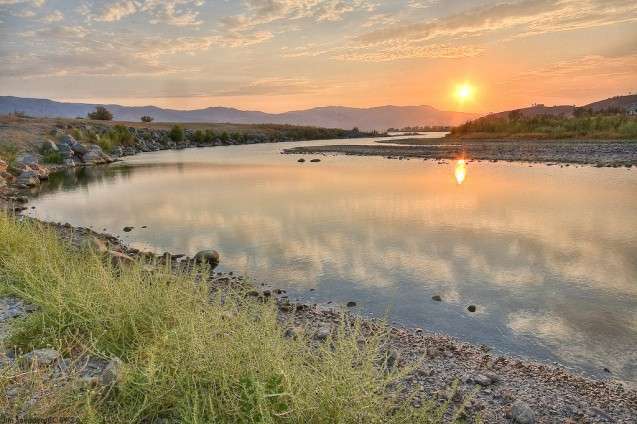An interesting piece of research in Geophysical Research Letters Sept 23rd 2015 (see http://phys.org/print362211570.html).
From the abstract we learn that researchers have found evidence of a 2000 year long mego-drought in southern California (bigger by far than the hype surrounding the lack of rain for the past year or so). The researchers are not prepared to do things by half it would seem – why beat about the bush. Let's have a really big drought.
Well, that is one way of looking at what they are saying but that would be trite. In spite of the obvious link to modern CAGW they are telling us something important about climate during the Late Glacial Maximum on the western side of N America.
 The ecologists reached their conclusion after taking a sediment core from the above lake, near Los Angeles. It showed pine and juniper that dominated the region since 32,000 years ago had fallen into decline between 27000 and 25000 years ago. The pollen analysis showed evidence of a dry climate with arid tolerant herbs, shrubs and chaparral dominating for around 2000 years. After 25,000 years ago pine and juniper returned and it is suggested they had migrated up the mountain side to a higher altitude during the drought – and then migrated back down when the drought came to an end.
The ecologists reached their conclusion after taking a sediment core from the above lake, near Los Angeles. It showed pine and juniper that dominated the region since 32,000 years ago had fallen into decline between 27000 and 25000 years ago. The pollen analysis showed evidence of a dry climate with arid tolerant herbs, shrubs and chaparral dominating for around 2000 years. After 25,000 years ago pine and juniper returned and it is suggested they had migrated up the mountain side to a higher altitude during the drought – and then migrated back down when the drought came to an end.
They go on to say that a weather pattern with winds coming from the Pacific Ocean normally bring moisture to the land behind the coast but in this instance the ocean off Santa Barbara must have been permanently warm (a sort of super El Nino situation) during the drought – which is interesting.
If the situation had prevailed for most of the Late Glacial Maximum we might have been forgiven to think it involved a permanent switch in climate (possibly as a result of polar wander) but that is not the case. It lasted 2000 years according to the research – a lot less than the LGM. It does however illustrate that climate was still subject to sweeping changes even during the height of the last Ice Age (and the very cold LGM).
